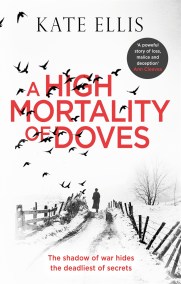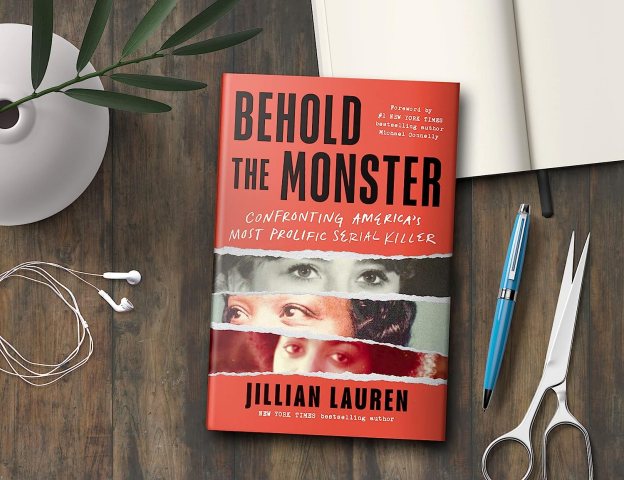Kate Ellis and the inspiration behind A High Mortality of Doves

Best known for her Wesley Peterson mysteries, Kate Ellis writes intelligent, intricately plotted detective stories that will have you hooked from cover to cover. Read on to found out about the inspiration behind her new historical thriller, A High Mortality of Doves.
I’ve recently published my twenty first Wesley Peterson mystery, The Mermaid’s Scream, and I love writing my Wesley novels with their modern day investigations, spiced with a blend of history and archaeology. However, a few years ago an idea for a purely historical crime novel (set in the aftermath of the First World War) came into my head and just wouldn’t go away.
The whole thing began when I wrote a short story for a Crime Writers’ Association anthology set in 1919 and, as I love research, I found myself delving deeper into the history of that time. How did communities come to terms with the loss of so many of their men? Behind all the patriotism and the grand memorials there must have been so much pain and anger from those who’d lost husbands, sweethearts, sons and brothers.
My interest was also personal. After my mother’s death I came across two letters amongst her possessions, handwritten on fragile paper. Dated 1916, they were from the Matron of a military hospital in France telling my mother’s grandmother that her son was gravely ill and not expected to live. Fortunately that young soldier survived to become my grandfather but those letters stuck in my mind. I became interested in the treatment of the injured, both in France and back in Blighty, and the way in which large houses were converted into military hospitals providing sanctuary from the trenches. The wounded were taken good care of but so often the young men would be patched up and sent back to fight.
As luck would have it, a National Trust property near my home (Dunham Massey in Cheshire) had been one of these hospitals and, to commemorate the outbreak of WW1, the wards were reconstructed, telling the story of the soldiers who were treated there. This was a wonderful aid to my research and it was clear that the men loved the surroundings and kindness of the nurses, many of whom were volunteers (VADs – Voluntary Aid Detachment).
Also a chance conversation with a friend, taught me that masks were created for soldiers with horrific facial injuries. This was wonderful, pioneering work and gave disfigured men their lives and confidence back – and yet to a crime writer a mask can hide whole identities as well as hideous wounds.
The idea for A High Mortality of Doves brewed in my mind for a long time before I summoned the courage to begin writing. The title came from a chronicle written in the 1340s, a year or so before the Black Death ravaged the country. There was appalling weather, the crops failed and there was ‘a high mortality of doves.’ The traditional association of doves with peace made it seem a very appropriate title.
I chose the setting of a close knit Derbyshire village, where the local ‘big house’ (owned by the Cartwright family) had been used as a hospital during the war years. When the book opens the Cartwrights have moved back home and are coming to terms with the rapid social changes caused by the years of conflict. The story focuses on Flora Winsmore, a doctor’s daughter who’d worked as a VAD during the war. She becomes involved when a number of strange killings around the village leave the local police overwhelmed and a detective from Scotland Yard is called in. Inspector Albert Lincoln is a man damaged by war and personal tragedy and he has the task of catching a particularly cunning, vicious and damaged killer.
A High Mortality of Doves is the first novel in a new trilogy. It was a book I felt I just had to write.
The paperback is out on the 4th May 2017.
1919. The Derbyshire village of Wenfield is still reeling from four terrible years of war, and now, just when the village is coming to terms with the loss of so many of its sons, the brutal murder of a young girl shatters its hard-won tranquillity.
Myrtle Bligh is found stabbed and left in woodland, her mouth slit to accommodate a dead dove, a bird of peace.
During the war Myrtle worked as a volunteer nurse with Flora Winsmore, the local doctor's daughter, caring for badly wounded soldiers at the nearby big house, Tarnhey Court.
When two more women are found murdered in identical circumstances, Inspector Albert Lincoln is sent up from London, a man not only wounded in war but damaged in peace by the death of his young son and his cold, loveless marriage. Once in Wenfield, Albert begins to investigate the three recent murders and the Cartwright family of Tarnhey Court and their staff fall under suspicion as their hidden lives and secrets are uncovered.
With rumours of a ghostly soldier with a painted face being spotted near the scene of the murders, the village is thrown into a state of panic - and with the killer still on the loose, who will be the next to die at the hands of this vicious angel of death?







